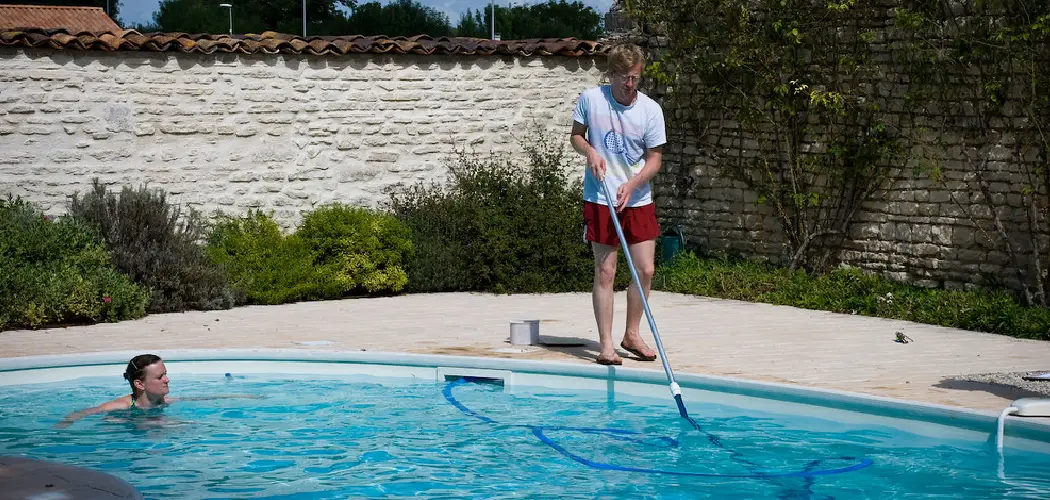Are you looking for an easy way to prepare your pool for the warm summer months? If so, then this blog post is just the thing you’ve been searching for. Cleaning a pool after a long winter can seem intimidating and overwhelming, especially if it’s something you’ve never done before. But don’t worry!
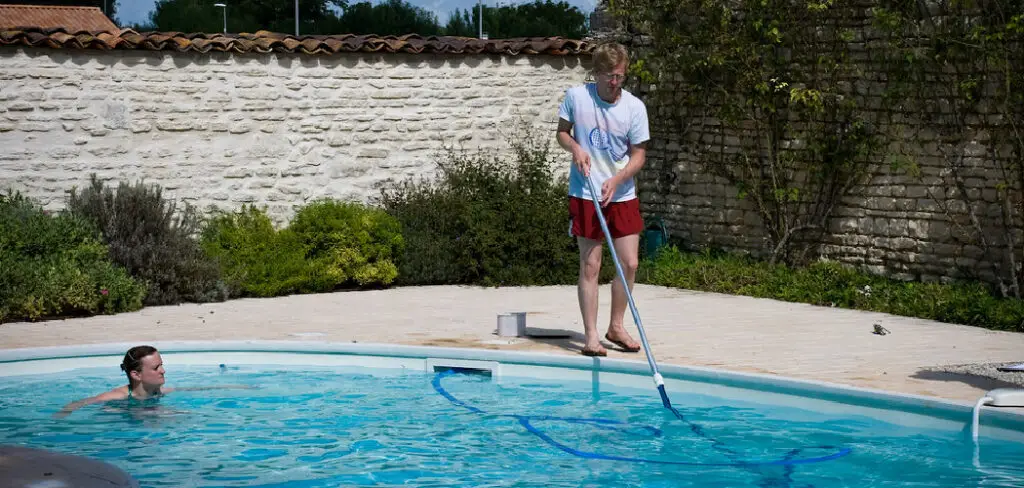
Pool maintenance is an essential part of owning a swimming pool, and it’s necessary after the winter season. During the colder months, your pool may accumulate debris, algae, and bacteria that can make the water dirty or even unsafe to swim in.
In this article, we’ll review everything from properly removing debris to tips on preserving pH levels afterward. So, keep reading to learn how to clean my pool after winter!
What Will You Need?
Before you begin cleaning your pool after winter, it’s essential to make sure you have all the necessary tools and supplies. Some of these items may already be in your possession, while others may require a trip to the store. Here are some things you’ll need:
- Pool cover pump
- Skimmer net
- Pool brush
- Algaecide (if needed)
- pH testing kit
- Shock treatment (if needed)
Once you have everything gathered, it’s time to start cleaning your pool!
10 Easy Steps on How to Clean My Pool After Winter
Step 1. Remove the Pool Cover:
The first step in cleaning your pool after winter is to remove the pool cover. If water is on top of the cover, you can use your pool cover pump to remove it.
After the water is removed, carefully remove the cover, making sure not to let any leaves or debris fall into the pool. Once removed, clean it thoroughly, allow it to dry, and store it correctly for the next winter season.
Step 2. Clean the Pool Area:
After removing the pool cover, the next step is to clean the surrounding area of the pool. This includes any patio furniture, pool toys, or any other items that you have around the pool. Remove any leaves, twigs, or other debris that might have accumulated over the winter.
Make sure to clean around the pool before you begin to clean the inside to prevent any additional debris from falling in.
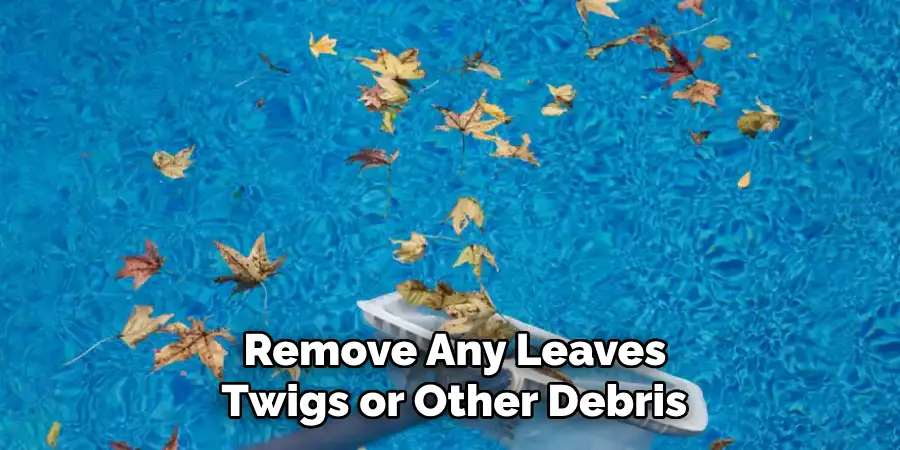
Step 3. Skim and Vacuum the Pool:
The third step involves cleaning the pool itself. Using your skimmer net, remove leaves, bugs, and any other debris floating on the surface of the pool water. The key is to be thorough and patient, making sure you cover all areas of the pool. After skimming, it’s time to vacuum the pool.
Attach the vacuum to your pool’s filtration system, then methodically clean the bottom and sides of the pool to remove any debris that has settled. It is essential to vacuum slowly to prevent stirring up the debris, which can cloud the water and make the cleaning process more difficult.
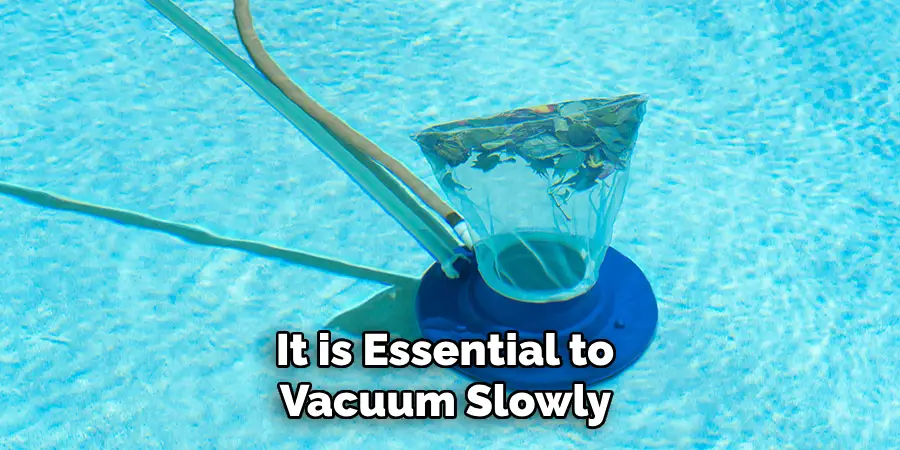
Step 4. Brush the Pool Walls and Floor:
Once you’ve vacuumed the pool, it’s time to brush the walls and floor. This is an essential step in removing algae and other deposits built up over the winter. Start at the shallow end of the pool and work your way toward the deep end.
Ensure to scrub all areas, including corners and behind ladders. For concrete pools, you can use a steel-bristle brush, while a softer nylon-bristle brush is better suited for vinyl, fiberglass, or painted pools. After brushing, allow the pool to settle for a few hours, then vacuum again to remove any dislodged debris.
Step 5. Test and Adjust the Water Chemistry:
After cleaning the physical aspects of your pool, it’s time to focus on the water chemistry. Using your pH testing kit, check the water’s pH, alkalinity, and chlorine levels.
Ideal pH levels should be between 7.2 and 7.6, the total alkalinity should be between 80 and 120 ppm (parts per million), and the chlorine level should be between 1.0 and 3.0 ppm. If the levels are off, use the necessary chemicals to adjust them. Remember, always add chemicals to water, not the other way around, to avoid dangerous reactions. Let the pool circulate for a few hours after adding chemicals to ensure they’re thoroughly mixed.
Step 6. Shock Your Pool:
Once your pool’s chemical levels are balanced, it’s time to shock your pool. This process involves adding a large amount of chlorine (or non-chlorine shock for pools that use alternative sanitizers) to kill any remaining bacteria, algae, or other organic contaminants in your pool. Follow the manufacturer’s instructions on the shock treatment package to determine how much to use.
Typically, you’ll want to use 2 pounds of shock for every 10,000 gallons of water. Remember to shock your pool at dusk or at night to prevent the sun from burning off the chlorine before it has a chance to work effectively. After shocking, let the pool filter run overnight to circulate the chemicals fully.
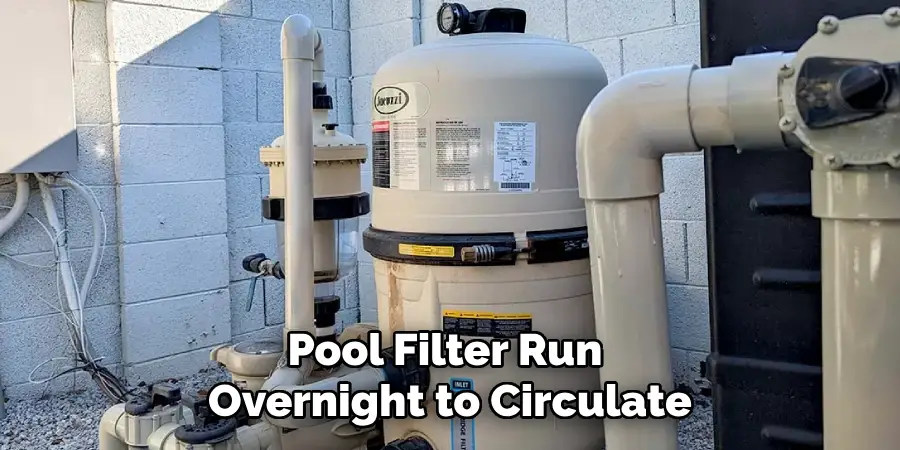
Step 7. Add Algaecide (If Necessary):
If you notice signs of algae growth in your pool, it’s time to add algaeecide. Algaecide is a chemical that prevents and kills algae, helping to keep your pool water clear and clean. Follow the manufacturer’s instructions on the algaecide bottle to determine how much to use.
Always pour the algaecide before the pool’s return jets to ensure it is appropriately circulated. Leave your pool pump running for at least 24 hours after adding the algaecide to ensure it is evenly distributed throughout the pool.
Step 8. Check and Clean the Pool Filter:
After treating the pool with algaecide, your next step is to check and clean the pool filter. Depending on the type of filter you have – cartridge, sand, or DE (diatomaceous earth) – the cleaning method will vary.
For cartridge and DE filters, remove the cartridge or grid, rinse with a hose, and replace it. For sand filters, backwash the filter until the water runs clear. If the filter is significantly dirty or has yet to be cleaned in a while, it may be best to deep clean or replace it. A clean filter is crucial for maintaining clear, clean pool water.
Step 9. Fill Up the Pool:
After cleaning and treating your pool, it’s time to refill it with fresh water. Make sure to add enough water so that the level reaches halfway up the skimmer intake. This will ensure proper filtration and circulation in your pool.
Step 10. Run Your Pool Pump and Filter:
The final step in cleaning your pool after winter is to turn on your pool pump and filter. Make sure to run it for at least 24 hours to circulate the chemicals and balance out the water chemistry fully. After this, your pool should be clean, clear, and ready for swimming season!
Remember to continue checking and maintaining proper water chemistry throughout the swim season to keep your pool in top condition. Now you can relax and enjoy your sparkling, clean pool all summer long!
Following these steps, you can ensure that your pool is properly cleaned and ready for use after winter.
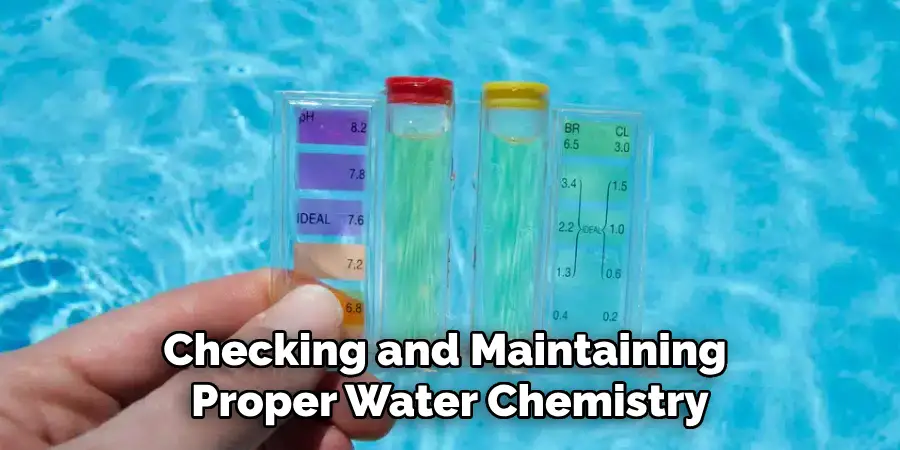
5 Additional Tips and Tricks
- Regular Maintenance: After cleaning your pool for the first time after winter, a regular maintenance routine can help to keep it clean and clear all season long. This includes skimming, vacuuming, and brushing your pool at least once a week, as well as monitoring and balancing the water chemistry.
- Cover Your Pool: When not in use, covering your pool can help to prevent debris, leaves, and other contaminants from entering the water and making cleaning more difficult.
- Use a Solar Blanket: In addition to keeping debris out of your pool, using a solar blanket can also help to heat the water and reduce evaporation, which can save on heating costs and conserve water.
- Hire a Professional: If you need more time to handle pool maintenance, or if your pool requires significant repairs, consider hiring a professional pool service company to help keep your pool clean and well-maintained.
- Properly Store Pool Chemicals: When not in use, store your pool chemicals safely and according to the manufacturer’s instructions. This includes keeping them out of reach of children and pets, away from direct sunlight, and in a dry, well-ventilated area.
With these additional tips and tricks, you can maintain a clean and enjoyable pool all season.
5 Things You Should Avoid
- Neglecting Regular Cleaning: Allowing debris and leaves to accumulate in your pool can lead to clogged filters and unbalanced water chemistry. Regular cleaning is essential for maintaining a clean and healthy pool.
- Ignoring Water Chemistry: Failing to check and adjust your pool’s water chemistry regularly can result in the growth of harmful bacteria, algae, and other microorganisms. Always ensure the pH, alkalinity, and chlorine levels are within the recommended range.
- Overusing Chemicals: While it’s essential to use chemicals to maintain your pool, using too much can result in skin, eye, and respiratory irritation for swimmers. Always use chemicals as directed by the manufacturer.
- Letting Your Pool Run Dry: Always make sure the water level in your pool is maintained. If the water level drops too low, it can damage your pump and filtration system.
- Not Covering Your Pool: Leaving your pool uncovered, especially when unused, can lead to debris contamination and water loss due to evaporation. Use a pool cover whenever possible to protect your pool and conserve water.
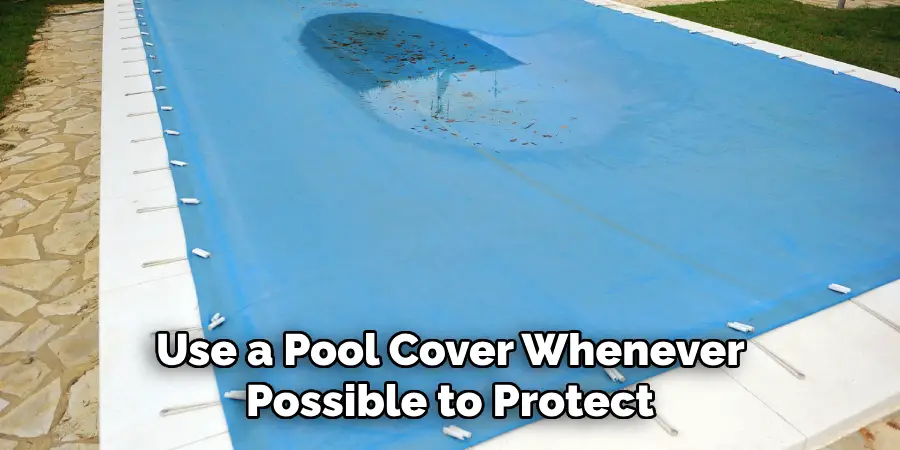
By avoiding these common mistakes, you can ensure your pool stays clean and safe for swimming all season long.
Conclusion
Now that you know how to clean my pool after winter, it’s time to get started! Follow our advice, and you’ll be swimming in no time. Don’t let a neglected pool detract from summer fun; take the initiative now and enjoy a properly maintained pool.
No need to take it slow either – get out there with your cleaning equipment and give your pool the attention it needs. Summer is almost upon us, and with it comes sunshine and relaxation; don’t let yourself down by having an untidy pool. Make sure that all of your guests enjoy an enjoyable summer vacation without worry or hassle.
So go on, invest in some good quality cleaning materials, show your hard work, and make sure everyone enjoys themselves in the water this summer!
About
Outdoor Fixes is a distinguished figure in the world of Diy design, with a decade of expertise creating innovative and sustainable Diy solutions.
His professional focus lies in merging traditional craftsmanship with modern manufacturing techniques,
fostering designs that are both practical and environmentally conscious. As the author of diy,
outdoorfixes delves into the art and science of outdoorfixes-making, inspiring artisans and industry professionals alike.
Education RMIT University
(Melbourne, Australia) Associate Degree in Design (Outdoor Fixes) Focus on sustainable design, industry-driven projects,
and practical craftsmanship. Gained hands-on experience with traditional and digital manufacturing tools, such as CAD and CNC software.
Nottingham Trent University
(United Kingdom) Bachelor’s in outdoorfixes.com and Product Design (Honors) Specialized in product design with a focus on blending creativity with production
techniques. Participated in industry projects, working with companies like John Lewis and Vitsoe to gain real-world insights.
Publications and Impact
In diy, Outdoor Fixes his insights on indoor design processes, materials, and strategies for efficient production.
His writing bridges the gap between artisan knowledge and modern industry needs, making it a must-read for both budding designers and seasoned professionals.

